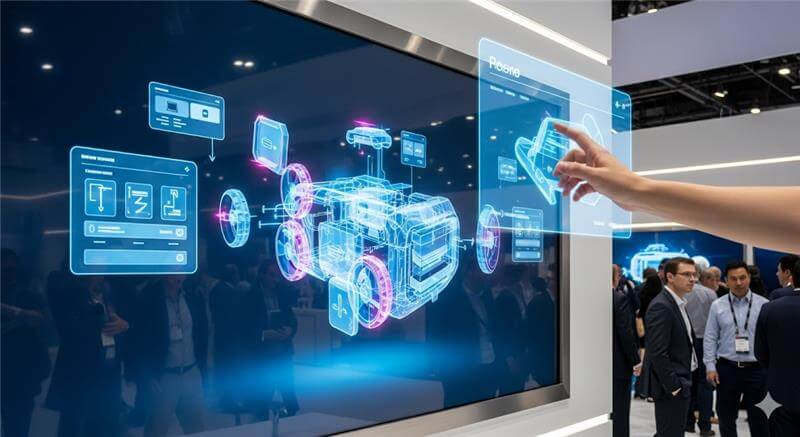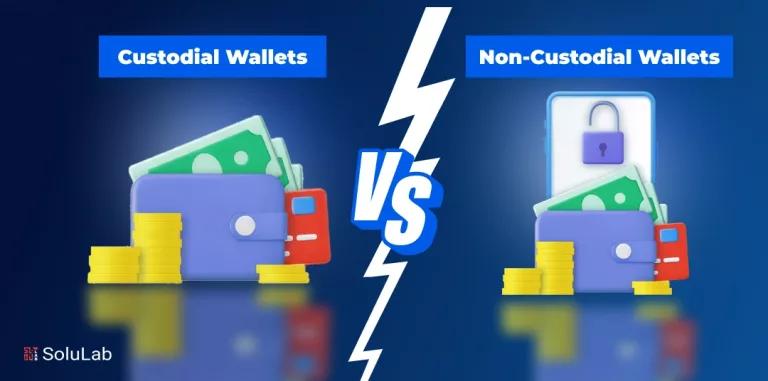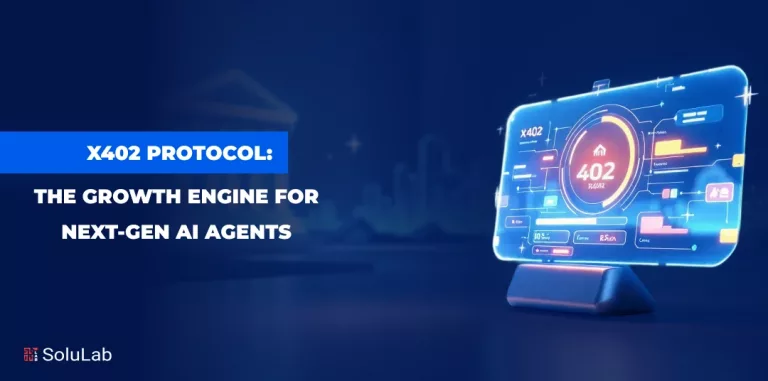
Trade shows are designed to wow – but let’s be honest: most booths end up looking and feeling the same. A few branded backdrops, a looping video, someone politely asking, “Can I tell you about our solution?”
But what if you build something massive? Complex? Something that simply can’t fit in a booth?
If your product is too big, too delicate, or too integrated into real-world environments to be dragged across the country, you face a dilemma. Do you rely on brochures and screenshots – or do you bring the experience to life?
That’s exactly where 3d product configurator software can help.
Let’s Be Honest: You Can’t Bring a Factory to a Trade Show
For companies that manufacture large-scale, modular, or highly customized products – think biotech systems, industrial machinery, smart building components, or high-end B2B furniture – trade shows create a painful dilemma:
- Do you spend tens of thousands of euros trying to bring a full-size prototype?
- Do you scale everything down and rely on miniature models?
- Or do you show static posters and hope people can “imagine it”?
Each option feels like a compromise.
That’s where configurators come in. Using powerful 3D engines, modern configurator software allows exhibitors to digitally showcase everything they can’t physically ship. Visitors walk up to a screen, tablet, or kiosk and start exploring:
- Changing sizes
- Rotating views
- Switching materials
- Previewing add-ons
- Testing layouts
- Seeing pricing shift in real-time
You’re not just telling people what your product does. You’re letting them do it.
From Spectator to Co-Creator: Why Interactivity Wins
The psychology behind this is powerful – and often overlooked.
At a typical trade show, people walk past booths in seconds. They nod politely, they flip through a brochure, and they leave. Passive interaction. Nothing sticks.
But when someone walks up and starts building their own product variation with a configurator – choosing modules, colors, features – they go from spectator to co-creator.
And that creates:
- Engagement: They spend time. They’re focused.
- Memory: The act of configuring makes the booth experience memorable.
- Emotional investment: They’ve built something. It’s not a product — it’s their version of it.
This is the essence of “experiential marketing,” and 3D configurators make it feel effortless.
Why 3D Product Configurators Work So Well on the Trade Show Floor
There are five reasons why this software is an ideal fit for real-world exhibitions – and none of them are just about “looking cool.”
1. Space doesn’t matter anymore
Even in a modest 3x3m booth, you can showcase your entire catalog with all its variations – no forklifts, freight shipments, or assembly tools required. You’re showing the impossible, instantly.
2. Complex products become understandable
Have a multi-component system that’s hard to explain? Let users visually build it, piece by piece. It’s faster than any pitch. No more “imagine if…” or awkward PowerPoint slides.
3. Instant visual feedback = instant understanding
Every time a visitor clicks something – a component, a color, a layout – the screen updates. They see the impact of their decisions. That feedback loop is gold for engagement.
4. Data collection without the pushiness
Most configurators allow users to save their builds by entering an email. That’s lead capture – done organically, without hard selling.
5. It works before, during, and after the event
You can share a configurator link ahead of the event to tease the experience. You can follow up afterward with each visitor’s saved configuration. It’s not just a demo. It’s a sales journey.
Magento Configurator Use Case: Real Sales Enablement, Not Just Eye Candy
Now imagine your configurator isn’t just a standalone tool – but connected directly to your ecommerce or CRM backend.
That’s where a solution like a magento configurator shines.
At the booth, a visitor creates a fully customized version of a product. That configuration gets sent directly into your Magento system. You’ve now captured:
- Their preferred product features
- Their contact info
- Their pricing range
- And maybe even a pre-filled quote request
This isn’t just cool tech. It’s actionable data that your sales team can use the minute the trade show ends.
No more “Let’s follow up with that guy in the blue shirt.”
Now it’s “Here’s what Sarah configured at our booth. She’s interested in the XL version with feature set C. Let’s send her a quote.”
It’s a total shift – from vague lead generation to concrete opportunity tracking.
You’re Not Just Showing the Product – You’re Showing the Possibilities
Many buyers don’t know what’s possible until they see it.
With static product displays, you’re limited to a few set options. But with a 3D configurator, you can show:
- Alternate configurations
- Hidden features
- Optional add-ons
- Custom branding
- And even future products that aren’t physically built yet
This helps customers think bigger. They’re not just buying what’s in front of them – they’re imagining what they could create.
That kind of interaction plants seeds. It opens conversations. It leads to bigger deals and better-qualified leads.
The ROI Argument: More Leads, Less Freight
Let’s be practical for a moment.
The cost of shipping large products to a trade show — plus installation, booth design, damage risk, and teardown — adds up fast.
Compare that to a 3D configurator:
- No physical product transport
- No booth redesign every year
- No risk of damage or loss
- And instead of showing one thing, you’re showing everything
When you consider that many buyers want customization anyway, letting them self-serve that process in 3D at your booth doesn’t just make sense — it becomes a competitive advantage.
A Real-World Example (No Names Needed)
Let’s say you’re a company that manufactures modular data centers. These aren’t tiny gadgets. They’re massive, complex, and designed to be integrated with a building or infrastructure environment.
Bringing a physical unit to a trade show? Impossible.
But your configurator allows visitors to:
- Choose dimensions based on the floor plan
- Add or remove equipment
- Adjust power and cooling specs
- Visually explore the final design
And then – they save it. That design becomes a qualified lead.
The best part? Your team can now follow up with a real configuration, not a vague “contact from booth.”
How to Make the Most of a Configurator at Your Event
If you’re planning to use a configurator at an upcoming trade show, here are five practical tips to get the most out of it:
1. Make it part of the booth experience
Place it on a touchscreen kiosk, a mounted tablet, or a large screen with a sales rep. Make it visible and inviting — not hidden in a corner.
2. Train your staff to use it
Sales reps should know how to walk visitors through the configurator and highlight cool features. It’s not a toy — it’s a tool.
3. Collect contact info naturally
Prompt users to save their build via email. Offer to send them a summary, spec sheet, or quote based on their choices.
4. Use it as a follow-up engine
After the event, your sales team should reference each visitor’s configuration in their emails or calls. “Hi, I saw you configured the X200 with advanced thermal control — want to explore options?”
5. Promote it pre-event
Send out teaser links to your mailing list. “Coming to Booth B15? Try designing your custom build before the show.”
Final Thought: When You Can’t Bring the Product, Bring the Power to Imagine It
There’s something powerful about seeing a product in person. But when you can’t do that, the next best thing isn’t a video, or a model, or a catalog.
It’s letting your buyer build it themselves.
That’s what a 3D configurator does. It brings the product to life — even when the product isn’t there. It turns your trade show booth from a presentation into an experience.
And more importantly, it tells your visitors: “We’re not here to push a product. We’re here to help you create the one you actually want.”
That’s not just marketing. That’s modern selling.




